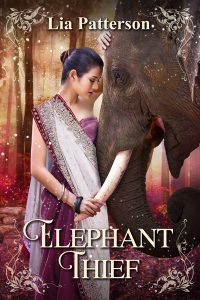 I’m so excited to announce that my new book ‘Elephant Thief’ will be released on July 8th and can now be pre-ordered at Amazon, iBooks, Kobo and Nook.
I’m so excited to announce that my new book ‘Elephant Thief’ will be released on July 8th and can now be pre-ordered at Amazon, iBooks, Kobo and Nook.
Set in the same world as ‘Bride to the Sun’, but some three hundred years earlier and to the north, it chronicles the adventures of Arisha, a young Wood mage.
From the blurb:
When magically gifted Arisha runs away from an army camp with her elephant Hami in order to save him from death in battle, she thinks she’s in deep trouble. However, she soon discovers that things can always get worse.
Escaping across a war-torn country, they are captured by the enemy’s leader. Rhys, known as the Eagle and with a reputation as a cold blooded killer, wants to use the elephant to take revenge on Arisha’s people and needs her to control Hami.
Arisha is ready to fight him every step of the way, but to her annoyance, instead of throwing her in a rat-infested prison, he behaves with honour. Grudgingly she comes to respect him and they find themselves drawn to each other despite their differences.
But can Arisha bridge the gap between opposing countries and personalities before the decisive battle is joined?
A tale of elemental magic, almond eyes, daring escapes and feathers.
If you want to get a taste of the story, an excerpt of the first three chapters is available here.
I hope you’ll enjoy it and would be ever so pleased if you left me a review!
Elephant Thief on: Amazon iBooks Kobo Nook Smashwords

 Megan Whalen Turner is a great writer and any story by her is worth reading, but I have to admit
Megan Whalen Turner is a great writer and any story by her is worth reading, but I have to admit 

 Goldenhand
Goldenhand 


